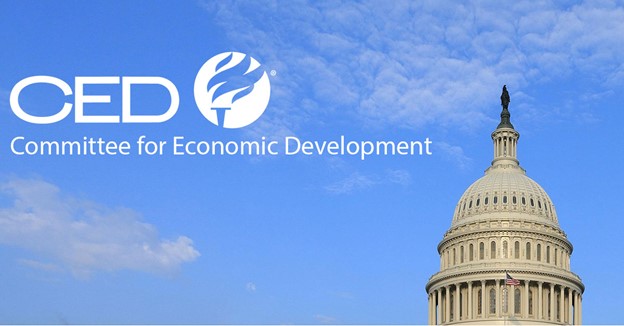The Social Disparity Behind America’s Growing Obesity Gap
20 Mar. 2014 | Comments (0)
![]()
America is bursting at the seams. Two-thirds of adults and more than one third of kids and teenagers are overweight or obese. For children, obesity has more than doubled in the past thirty years, making it one of the biggest public health concerns in the United States.
Last August, health experts around the country breathed a sigh of relief when the CDC reported that childhood obesity might be leveling off. After years of fighting the war on obesity and campaigning to get kids to eat healthier and be physically active, there was finally some uplifting news. Some experts were cautiously optimistic, while others outright cheered.
Not so fast. Put that cupcake down.
A closer look at the trends reveals that while the overall obesity rate has plateaued, there is more to the story. In a paper published yesterday in the Proceedings of the National Academy of Sciences,my colleagues Carl B. Frederick, Robert D. Putnam, and I show that obesity is falling — but only for one part of the population.
Looking at two national health surveys, we found that obesity has decreased among teenagers who come from wealthy, well-educated families, but it has continued to increase among poor teens. Putting these two trends together, it looks like the epidemic is easing.
But underneath the aggregate trend lies a striking social disparity.
It is no news that obesity is a bigger concern for poor children. But our research shows that the gap is growing. Between 2003 and 2010, obesity rates among teens whose parents have no more than a high-school education rose from about 20% to 25%. Over the same period, obesity rates among teenagers whose parents had a four-year college degree or more declined from 14% to about 7%. We find similar trends when we use a measure of family income instead of parental education to measure socioeconomic status.
The growing obesity gap is bad news for public health officials, who will have to continue to fight costly obesity-related diseases in the years ahead. But the real victims in this failed war on obesity are the kids, whose future health prospects look nothing short of grim. Obese kids grow into obese adults. They are also more at risk for a host of other health problems such as type-2 diabetes, obstructive sleep apnea, high blood pressure, several types of cancer and psychological problems.
So what is behind the diverging trends?
In simple terms, obesity is a result of an energy imbalance — we consume more calories than we use. To lose weight, we should eat less and move more.
Turns out, all kids — poor and wealthy — are eating fewer calories than they did a decade ago. Looking at the eating and exercise patters of teens in both groups, we found that a difference in physical activity may be what is really driving the obesity gap.
One in five kids from less-educated, low-income families report being physically inactive. By comparison, only one in 10 teens with college-educated parents said they had done no sports or exercised in the previous week. The exercise gap has increased sharply during the last ten years, mirroring the trend in obesity rates.
What is driving the sharp difference in physical activity over the last few years? The answer is complicated, but a good starting point is to look at the role of schools, neighborhoods, and health care professionals.
Teens from poor families are increasingly less likely to participate in organized sports. The introduction of “pay to play” programs has made school sports a luxury that only wealthy families can afford. Joining the football team in the Arlington school district in Massachusetts costs $500, which almost seems reasonable compared to the price tag of playing tennis in Riverside Local School District in Ohio: $874. As part of money-saving efforts, many schools have been forced to cut down or even eliminate their sports programs — and these are the schools that poor kids are more likely to attend.
Poor kids are also increasingly more likely to live in poor neighborhoods that provide fewer opportunities for being physically active. Kids who live in neighborhoods with sidewalks, parks, and recreational centers and where they feel safe to bike around the block or run around the park are more likely to be from wealthier families – and less likely to become obese.
Wealthy teens are also more likely to have a regular doctor and get advice on the importance of healthy eating and physical exercise.
If public health experts are to beat childhood obesity and thereby have a shot at reducing obesity among adults, they ought to pay more careful attention to class-based factors that contribute to obesity. Kids should have equal access to physical education and school sports, recreation centers and playgrounds, and they should feel safe walking or skateboarding around the neighborhood.
More than spreading the public health message about the importance of healthy diet and physical exercise, we should attack the problem at its root cause. In the spirit of celebrating the 50th anniversary of Lyndon B. Johnson’s “War on Poverty” campaign, we should make better progress in reducing the number of kids who live in poverty, attend schools with no PE classes, or live in neighborhoods where broken swing sets are a bitter reminder of what used to be playgrounds.
This blog first appeared on Harvard Business Review on 1/29/2014.
View our complete listing of Strategic HR blogs.
-
About the Author:Kaisa Snellman

Kaisa Snellman is Assistant Professor of Organisational Behaviour at INSEAD, where she teaches Power and Politics in the MBA program and Organisational Theory in the PhD program. She is on Twitter @Ka…









0 Comment Comment Policy